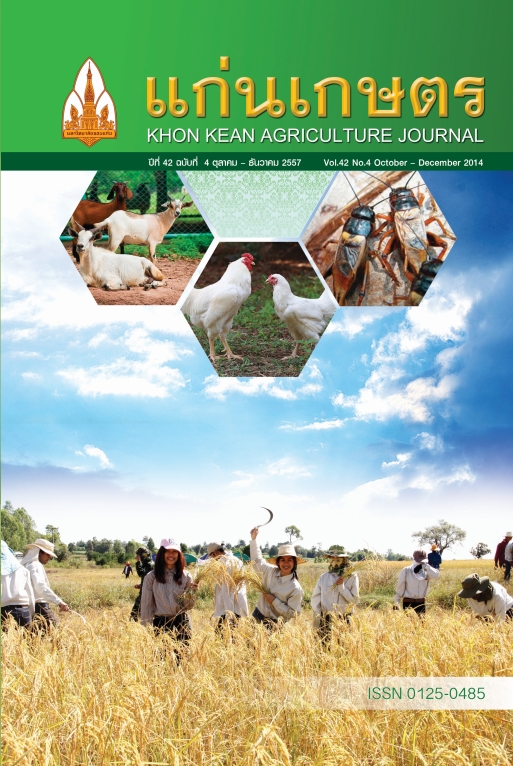Genetic variation and correlation of some agronomic traits, biomass and ethanol yield in diverse sweet sorghum (Sorghum bicolor L. Moench) cultivars
Main Article Content
บทคัดย่อ
Genetic diversity is important for the improvement in the genetic makeup of any crop, and the genetic inclusion of diverse parents in hybrid programs. Sweet sorghum (Sorghum bicolor L. Moench) contains high sugar-rich stalks like sugarcane. Sweet sorghum germplasm accessions were used in the improvement program to develop high total soluble solids, biomass yield and other characteristics related to total soluble solids, biomass yield and ethanol yield. The objectives of this study were to evaluate sweet sorghum cultivars introduced from different countries for flowering days, stalk diameter, plant height, stripped stalk weight, biomass yield, total soluble solids, harvest index, ethanol percentage, ethanol yield, and SPAD chlorophyll meter reading (SCMR); and determine the correlations among these traits to understand whether SCMR can be used as an indirect selection criterion for biomass yield and other traits. The experiment was conducted in the late rainy season in 2011. Fifteen sweet sorghum cultivars were arranged in a randomized complete block design with three replications under rain-fed conditions with supplemental irrigation. Significant differences among cultivars were observed for plant height (PH), stripped stalk weight (SSW), biomass yield (BY), total soluble solids (TSS), SCMR at days to 50% flowering, harvest index (HI), ethanol percentage, and ethanol yield (EY). PH positively and significantly correlated with SSW, BY, HI and EY. Stalk diameter (SD) positively and significantly correlated with BY, SSW, PH and SCMR. SSW positively and significantly correlatedwith BY, HI and EY. TSS positively and significantly correlated with ethanol percentage, HI and EY. SCMR positively correlated with BY. Keller, Theis, BJ248, KKU40, and SPV1411 were selected for further evaluation as well as immediate and further use in the sweet sorghum breeding program because these varieties showed good characteristics required for sweet sorghum improvement.


